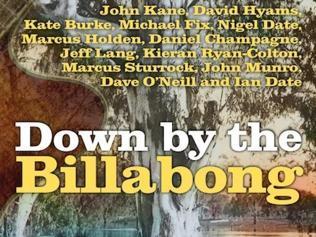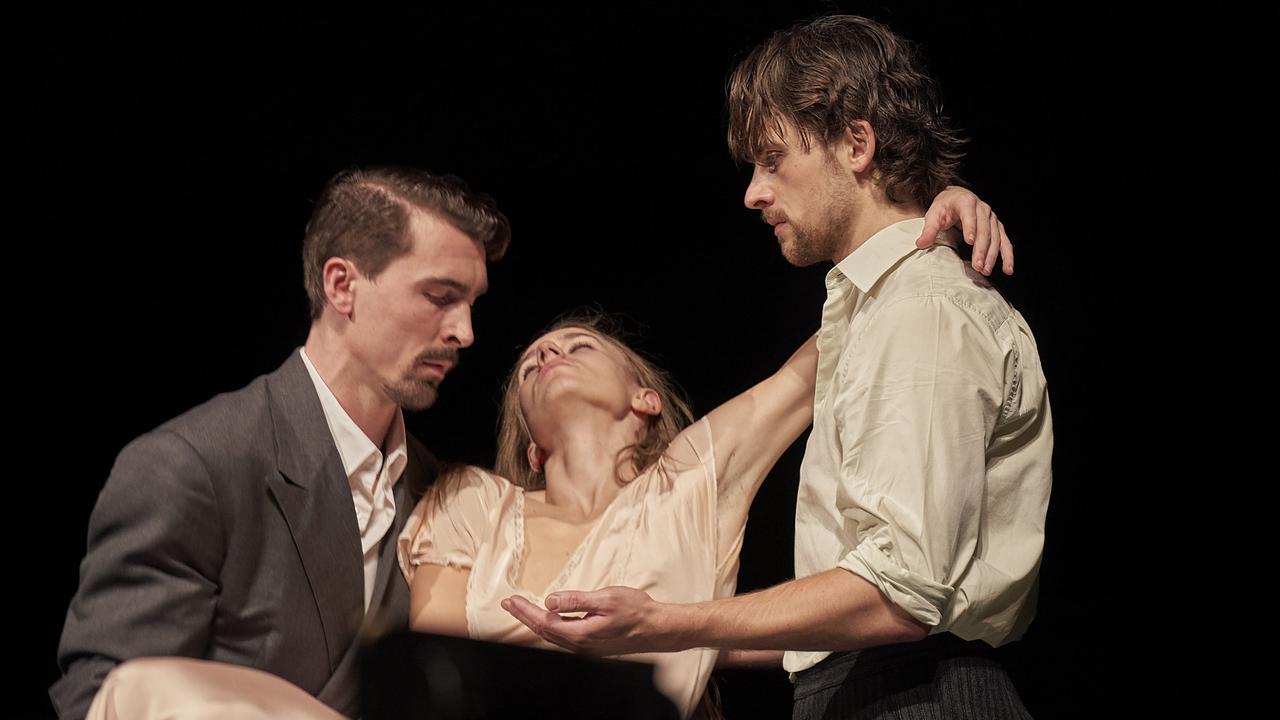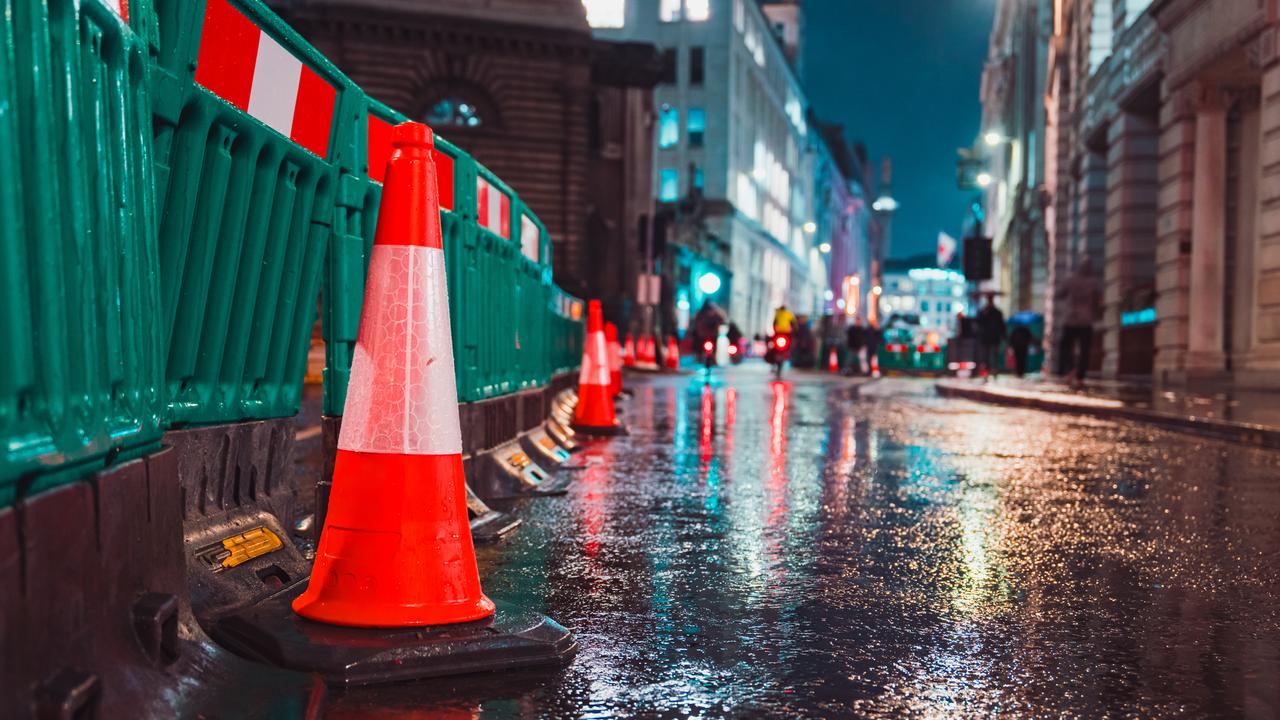Reviews: Billabong, Underworld, Dandy Warhols, The Baker Suite
Some of the country’s most respected guitarists to record tunes from the folk/bush archives for Down by the Billabong.

Some of the country’s most respected guitarists to record tunes from the folk/bush archives for Down by the Billabong.
GUITAR
Down by the Billabong
Various artists
Rouseabout/MGM
4.5 stars
Down by the Billabong finally brings to fruition a concept hatched four decades ago by Australia’s foremost folkloric authority. As part of his lifelong mission to explore the national ethos through music, project curator Warren Fahey has persuaded some of the country’s most respected acoustic guitarists to record their own selections and arrangements of tunes from the folk-bush archives.
Connoisseurs of quality guitar playing will find the resultant compilation compulsive listening, with the repetitive nature of melody and inherent simplicity of rhythm associated with many classics of the genre and era bringing out the best of the interpreters in terms of imagination and dexterity.
One of the hoariest bush band staples, Brisbane Ladies (aka Augathella Station), offers a fascinating comparison between the approaches of three of the redoubtable Fahey’s hand-picked contributors, all rightly renowned for their virtuosity and invention. Marcus Sturrock’s impressionistic solo rendition, delivered on a steel-strung baritone guitar, combines melody, rhythm and harmony most impressively. West Australian David Hyams uses DADGAD tuning and dobro atmospherics for an equally deft and evocative reading of Brisbane Ladies, in tandem with Overlanders. In abbreviated form, Daniel Champagne marries the same two chestnuts with aplomb and harmonic awareness.
Michael Fix opts for a brace of dyed-in-the-wool shearing ditties, rolling stately then strummed and fingerpicked versions of Ryebuck Shearer and Lachlan Tigers into one. He later evokes the inherent sadness of Waltzing Matilda by transposing the traditional verse into a minor key, thus emphasising the chorus. Playing superlative slide on resonator guitar over an electric guitar wash, Jeff Lang draws melodic nuances from Banks of the Condamine while embellishing with glissandos and string-bends. Performing on a pair of vintage Martin guitars, John Kane brings bluegrass feel to the bushranger standard Wild Colonial Boy and flatpicking style to Tomahawking Fred while genuflecting to a handful of Slim Dusty’s sidemen. Long-time Eric Bogle accompanist John Munro stays true to the original tunes in his stockman’s medley (The Dying Stockman/The Stockman’s Last Bed), before switching to open E tuning and a dampened bass line for a jaunty Manchester Gallop, with added mandolin and drum. Dave O’Neill plays successive schottische and jig medleys in standard tuning with suitable swagger.
Manifestations of Australian folk’s Anglo-Celtic legacy, with some jazz underpinning, can be heard on Marcus Sturrock’s left-field interpretations of Merrily Kissed the Quaker’s Wife and Drowsy Maggie, the latter rendered on seven-string guitar.
With an original 1940s’ Selmer guitar, Ian Date injects a dash of Django Reinhardt Hot Club swing feel to his rendition of Yarrawonga. Backing from Marcus Holden (on tenor guitar, cittern and mandolin), allied to chord variations and melody changes, serve to enhance Nigel Date’s somewhat eclectic and exotic versions of Bluey on the Brink and The Female Rambling Sailor.
Tony Hillier
ROCK
Distortland
The Dandy Warhols
Dine Alone/ Cooking Vinyl Australia
3 stars
There’s a curious regressive trait evident in the recording career of Portland, Oregon, rock band the Dandy Warhols. In its 20-plus year history, the quartet has released consistently excellent singles but only one excellent album: 2000’s Thirteen Tales From Urban Bohemia, which remains its most popular and vital set of songs. Unfortunately, ninth album Distortland doesn’t break with this tradition, for it’s yet another release that blends strong songs with weak ones.
The previous album, 2012’s This Machine, was the band’s creative nadir and its first truly forgettable LP. Distortland has a handful of great songs that rank among the band’s finest work: penultimate track Doves is built on a beautifully sedated groove and droning guitars that hark back to the band’s early interests in “shoegaze” material, but it ends abruptly after four minutes. Its 1995 debut album contained a 16-minute track in a similar vein and, despite its many charms, Doves feels like a missed opportunity to explore its sonic depth and breadth.
The understated, bass-heavy fourth single, Catcher in the Rye, is the other standout but, besides these two tracks, the moods and tones heard here are too varied for Distortland to be worth the attention of anyone other than existing fans. It’s a shame because, while songwriting and musical abilities clearly have not left the Dandy Warhols, it seems that quality control has.
Why throwaway album closer The Grow Up Song made it on to the final cut is inexplicable, especially considering that it follows Doves, the band’s best single song since 2009’s The Dandy Warhols are Sound — an album title that is clearly out of synch with some of the Dandy Warhols’ creative decisions of late.
Andrew McMillen
DANCE
Barbara Barbara, We Face A Shining Future
Underworld
Caroline
4 stars
Underworld’s 2015 tour — during which Karl Hyde and Rick Smith celebrated the 20th anniversary reissue of their seminal 1994 album Dubnobasswithmyheadman by playing it in its entirety — was seen by some as the trailblazing duo’s first move into nostalgia act territory.
The “clarity in thought” the tour created, however, instead led Underworld back to the studio where, as Hyde explained recently, he and Smith “rediscovered their spark”.
“It was two guys in a room with their gear, playing, until somebody does something that the other gets excited about, and then you start recording,” he recalls.
That relatively straightforward process saw Underworld’s seventh album — named after a conversation Smith’s father had with his mother before he died — recorded and mixed in under a year. The end result is impressive. While lacking up-tempo bangers such as Pearls Girl and the ubiquitous Born Slippy (Nuxx), singles that positioned Underworld as a pioneer of 90s rave culture, ominous first single I Exhale hits the right notes as Smith creates a pulsating rhythm for Hyde to deliver his spoken-word ramblings.
Similarly, on the booming If Rah, Hyde’s vocals are both nonsensical and poetic, creating an intensity long a trademark of Underworld productions. Low Burn harks back to past anthems, a beautifully building, atmospheric soundscape, complete with snarling synths, that precedes the beatless, guitar driven Santiago Cuatro.
Ova Nova, the bones of which was written on the duo’s first day in the studio after six years, speaks volumes about Underworld’s continuing chemistry. Lush strings and contemplative key stabs meld with warbling deep bass and Hyde’s filtered vocal to create a dreamy, hypnotic outing.
Hyde and Smith seem comfortable, both with their music and, importantly, with each other. They easily could have done the odd show and continued to progressively reissue their extensive back catalogue. That they haven’t, and instead produced new material of such quality, confirms their continuing relevance on the scene.
Tim McNamara
ROOTS
Still Life
The Baker Suite
Honiman/Planet
4.5 stars
Adelaide singer, songwriter and guitarist John Baker is among the Australian music scene’s best-kept secrets. A craftsman of the old school who has a poet’s eye for lyrics and an educated ear for melody and rhythm, his elegant and understated roots-inflected albums rank alongside those of acclaimed national treasures such as Paul Kelly and Shane Howard.
Still Life has special resonance given that it reflects innate personal realities related to cancer and was recorded between chemotherapy sessions.
The precariousness of Baker’s situation at the time poignantly permeates his fifth album in lines such as: “Breakfast at dawn, lying next to you / Our time starts now, there’s so much to do.”
Nightmares expressed in Time Bomb are assuaged by Baker’s mellifluous singing and smooth nylon-strung bossa nova guitar and the soothing Parisian-esque accordion fills of his partner in rhyme and love, Gayle Buckby.
A gentle Brazilian vibe, wheezy squeezebox and brushed snare belie similarly haunting subject matter in The House Where You Lived. Marching drum and dramatic prose propel MH17, a song prompted by the ill-fated Malaysia Airlines flight.
A catchy blues fingerpick and snappy lines like “I get lazy, you get mad, I get angry, you grow sad” accompany a ballad about burying pride.
A piece presumably inspired by Big Bill Broonzy has a Spanish rather than blues chord progression. In a moving love song, accordion accents poetry straight from the heart: “It was in my hour of trouble when you put your hand in mine / And you walked me through the valley where the sunlight never shines.”
The raffish quality of Adelaide’s Hindley Street is reflected in an eponymous track containing colourful rhetoric, skewed organ wash and gypsy violin.
Tony Hillier


